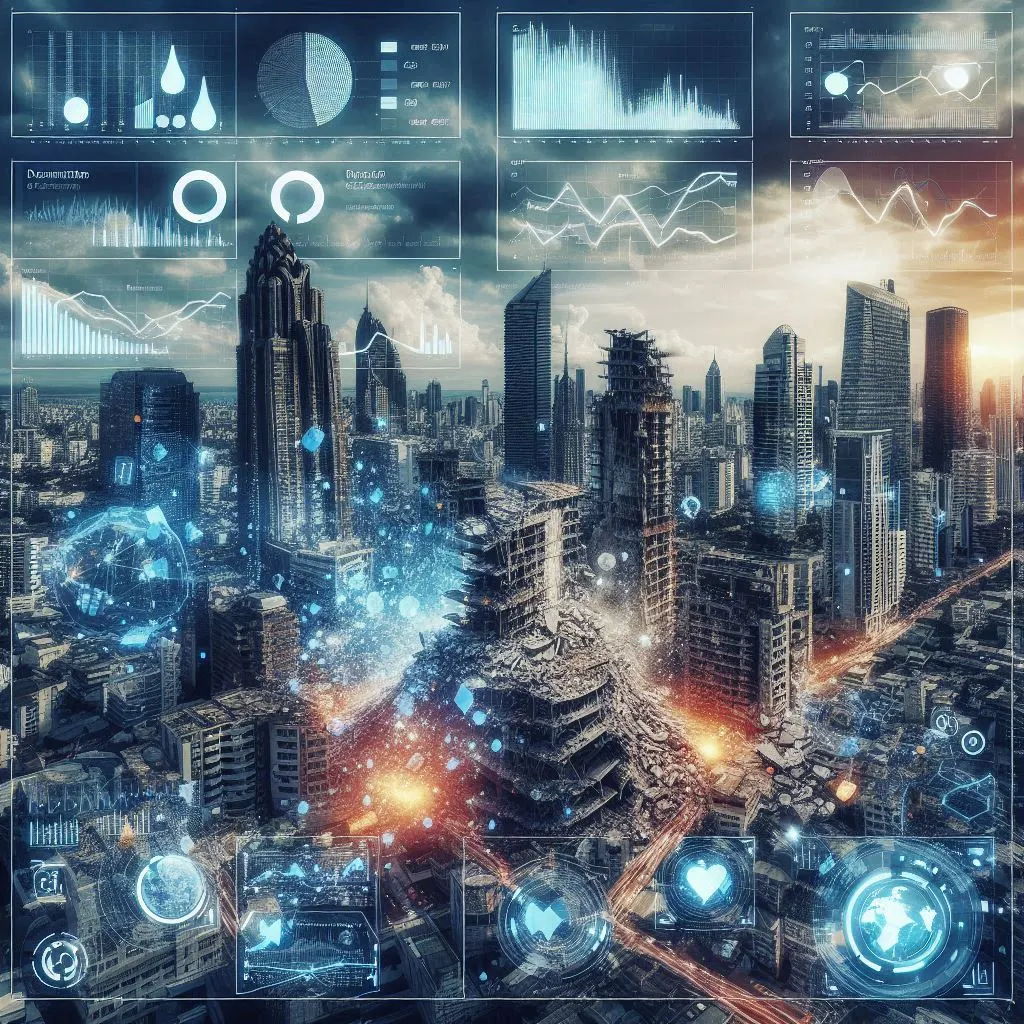Earthquake Risk Assessment Today: How Data Predicts Future Disasters Earthquakes are one of the most devastating natural disasters, often ...
Earthquake Risk Assessment Today: How Data Predicts Future Disasters
Earthquakes are one of the most devastating natural disasters, often striking with little warning and causing massive destruction. What if we could improve our accuracy in predicting them? While scientists cannot yet forecast earthquakes with pinpoint precision, data-driven risk assessment models have significantly improved our ability to assess seismic hazards and prepare for future disasters.
 |
| Prediction of an next earthquake alert system today |
In this article, we’ll explore how earthquake risk is assessed, the role of data in predicting future seismic events, and the methodologies used by experts worldwide.
What is Earthquake Risk Assessment?
Earthquake risk assessment is the process of evaluating the likelihood and potential impact of seismic activity in a specific region. It involves three key components:
1. Hazard Analysis – Examining the probability of earthquakes occurring in a given2. Vulnerability Assessment – Evaluating how susceptible buildings, infrastructure, and
Together, these elements help policymakers, engineers, and city planners develop strategies to mitigate earthquake damage.
How Does Data Help Predict Future Earthquakes?
While earthquakes cannot be precisely predicted, scientists use vast amounts of data to estimate where and when seismic activity is most likely to occur. Key data sources include:
1. Historical Seismic Data
- The United States Geological Survey (USGS) and Global Seismographic Network (GSN) maintain databases of past earthquakes, which are crucial for identifying trends.
- Studies show that regions with frequent small tremors are more likely to experience larger quakes (USGS, 2024).
2. Tectonic Plate Movements
- Advanced GPS monitoring systems track the slow movements of tectonic plates. When plates build up stress over time, it increases the likelihood of an earthquake.
- Example: The San Andreas Fault in California has a recorded slip rate of 22–35 mm per year, making it one of the most closely watched seismic zones (California Geological Survey, 2023).
3. AI & Machine Learning in Earthquake Prediction
- Deep-learning models analyze seismic wave patterns to detect foreshocks that often precede major earthquakes.
- In 2022, researchers at Stanford University developed an AI model that correctly identified 90% of foreshocks before main earthquake events in a controlled dataset (Stanford Seismology Lab, 2022).
4. Early Warning Systems
- Countries like Japan and Mexico have implemented Earthquake Early Warning (EEW) systems, which use real-time data to alert people seconds before an earthquake strikes.
- The ShakeAlert system in the U.S. has reduced injury rates by 20% in pilot tests by providing rapid alerts (USGS, 2023).
Key Factors That Influence Earthquake Risk
1. Geographic Location & Fault Lines
Some areas are naturally more prone to earthquakes due to their location near tectonic boundaries. The Pacific Ring of Fire experiences over 90% of the world’s earthquakes (USGS, 2024).
2. Population Density & Urbanization
Densely populated cities with poor infrastructure suffer greater losses. Example: The 2010 Haiti earthquake (Magnitude 7.0) killed over 230,000 people due to weak construction standards (World Bank, 2011).
3. Building Infrastructure & Materials
Modern earthquake-resistant buildings reduce fatalities. In contrast, Turkey’s 2023 earthquake (Magnitude 7.8) caused massive devastation due to substandard construction (UNDRR, 2023).
4. Depth & Magnitude of the Earthquake
- Shallow earthquakes (<70 km deep) cause more surface damage.
- Deep earthquakes (>300 km) tend to have less impact on the surface but can still trigger tsunamis (NOAA, 2024).
People Also Ask:
Can We Predict Earthquakes with 100% Accuracy?
No, current technology cannot predict earthquakes with absolute certainty. However, advancements in AI and seismic monitoring have improved forecasting models significantly.
Which Countries Have the Best Earthquake Prediction Systems?
Japan, Mexico, and the U.S. have some of the most advanced early warning systems, including Japan’s J-ALERT system and the ShakeAlert system in California.
How Do Scientists Measure Earthquake Risk?
Scientists assess earthquake risk using seismic hazard maps, historical earthquake data, and geophysical surveys to determine fault line activity.
What Are the Warning Signs of an Earthquake?
- Small tremors (foreshocks)
- Unusual animal behavior (not scientifically proven but observed in some cases)
- Gas emissions from the ground near fault lines
How Can Individuals Prepare for an Earthquake?
- Secure heavy furniture
- Have an emergency kit ready
- Follow earthquake safety drills
Conclusion: The Role of Data in Earthquake Preparedness
Data-driven earthquake risk assessment has revolutionized how we predict and prepare for seismic disasters. While we may never achieve 100% accuracy in earthquake forecasting, advances in AI, seismic monitoring, and global collaboration have made communities safer.
Governments, scientists, and individuals can all benefit from understanding earthquake risk data and taking proactive measures to minimize damage and loss of life.
Want to Learn More About Data Analysis?
If you’re fascinated by how data can predict disasters and drive insights, our courses can help you learn SQL, Tableau, and Excel to analyze real-world datasets. Enroll now and start your journey into data analysis!







No comments